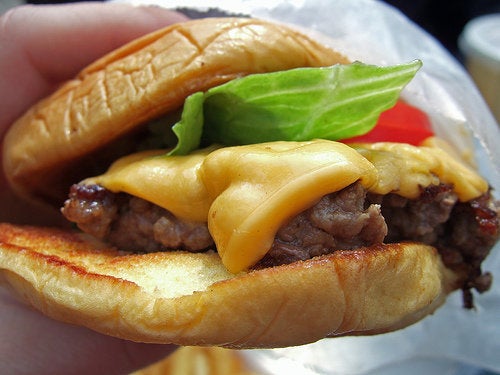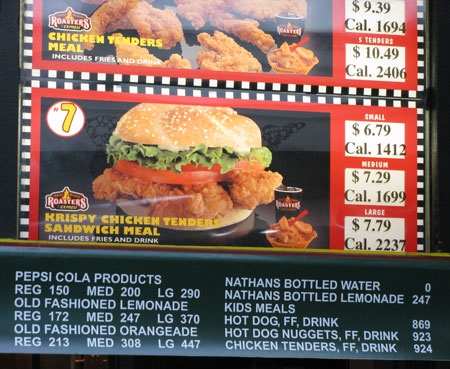
As a study by the Center for Science in the Public Interest and New York University famously found, dietitians had no idea how many calories or how much fat restaurant meals contained. The researchers showed more than 200 registered dietitians, who devote their lives to helping people eat healthier meals, five items. Those food professionals underestimated the calorie content of such meals as lasagna and a tuna salad sandwich by about 40 percent, or 200 to 700 calories. For instance, they thought that a typical dinner-house meal of a hamburger and onion rings had 865 calories, when it actually contained 1,550 calories.
If those food experts didn't know how many calories were in the meals, you can bet that Joe and Jane Diner are even more lost. That's a real problem when two-thirds of American adults are overweight or obese, conditions that increase the risk of everything from employment discrimination to diabetes to cancer.
It's been said by a former official of the National Restaurant Association that one of the most insidious innovations in American restaurants was the 12-inch dinner plate. That aided and abetted the growth of restaurant meals. When I was a kid, McDonald's served just one size hamburger, which had only about 250 calories. Now, you can down a Double Quarter Pounder with Cheese and quart-size Vanilla Shake, and waddle out through the golden arches with an extra 1,850 calories under your belt.
And as one fast-food industry executive once told me, "If you think our food is bad, you should look at table-service restaurants." I did. And what I found was shocking. For instance, a Fajita Quesadillas Beef w/Rice & Beans with a Sprite at Chili's Grill & Bar will sock you with 2,400 calories.

Those meals pose threats to many parts of your anatomy in addition to your waistline. Some meals at Red Lobster, Denny's, Olive Garden, and their like provide three or four days' worth of sodium (mostly from salt). All that sodium boosts blood pressure, which can cause heart attacks and strokes.
You'd never know how many calories were in your favorite restaurant meals unless you either scoured a restaurant's web site before you went out to eat (though Applebee's, IHOP, T.G.I. Friday's, Outback Steakhouse, and many others do not disclose any nutrition information) or if you lived in New York City or Seattle. Laws have gone into effect in those two places that require chain restaurants to list calories on their menus, so a TGIF menu in New York clearly states that a Jack Daniel's Ribs & Shrimp has 1,910 calories, while Grilled Cedar Salmon has 690 calories. Customers are informed and can choose.
California, Massachusetts, and about a dozen cities and counties have passed laws like New York City's, but those have not yet taken effect. In addition, Yum Brands, owner of KFC, Pizza Hut, and Taco Bell, said that it would voluntarily list calories in all its company-owned restaurants (and its franchisees probably would do the same).
Clearly, it would be inconvenient for everyone who wanted a few morsels of nutrition information before they ordered to visit New York or Seattle. Much better would be the passage of a national law, such as the "Affordable Health Choices Act," which was released by the Senate Health, Education, Labor, and Pensions Commitee on June 10th. That measure contains an agreement worked out by Senators Tom Harkin, Lisa Murkowski, and Tom Carper between a stronger consumer bill and a weaker industry bill (my CSPI colleague, Margo Wootan, helped bring the agreement about). If passed, the health care reform legislation would put calories on the menus--and menu boards (including at the drive-throughs) of tens of thousands of restaurants that are parts of chains of 20 or more units. It also would put calories on vending machines.
The restaurant industry had resisted calorie labeling for years, but the future is clear: consumers, accustomed to the nutrition labels on packaged foods, want at least a modicum of nutrition information when they're ordering at restaurants. And they are going to get that information--either from a patchwork of sometimes inconsistent state and local laws or one national law.
______________
Jacobson is executive director of the Center for Science in the Public Interest, the nonprofit publisher of Nutrition Action Healthletter